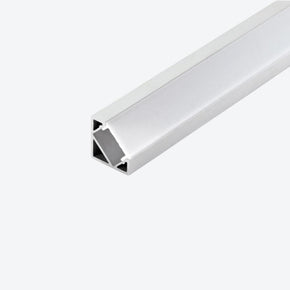- No products in the cart.
- ``
All you need to know about converting to LED
14
Jul
LED (or for the aspiring lighting aficionados a light-emitting diode) is the most efficient lighting technology available for general use. First hitting the market in the sixties, these lights have become more affordable through continuous innovation. So you might be considering switching out your incandescent bulbs with this cost-effective option. We’re here to make sure you’re equipped with all you need to know about making a smooth transition to LED.
Why choose LED?
LED lights will last and save you money
Familiar with the tortoise and the hare? Well, while your incandescent bulbs head out for a sprint, it’s the LED lights that’ll be left standing long into the race. When you first look at LEDs on the shelf, you might be a bit shocked at the initial investment. But if we told you that you could be buying up to 10 incandescent bulbs for every single LED light, you might start to think a little differently.
LED lights are better for the environment
If the cost-savings aren't already a good enough reason to make the switch to LED, there are also the benefits to the environment through reduced energy consumption, manufacturing and wastage. Switching to LED can cut your energy consumption by as much as 70 to 90%. This is because the technology behind LED lighting means that 95% of the energy used converts to light. The same can’t be said of incandescent bulbs, which only convert around 10% of the energy consumed into light. The remaining 90% of energy is lost as heat. I’m not sure about you, but we think the facts speak for themselves!
LEDs give you more control of your light
Not only do LEDs put you in control of creating ambience and reducing your energy consumption, but they also allow you to focus light more effectively. LED downlights and fixtures can be directional, meaning you can break up spaces, create task lighting or highlight features within a space.
How do I know which LED is right for me?
LEDs come in a range of shapes, sizes and variations. They’re extremely versatile with customisable colours and lighting intensity. When selecting the right LED for your space, it’s important to pay attention to its Kelvin (K). This is often referred to as the light ‘temperature’ and you’ll find the ‘K’ on the packet of any light bulb or LED downlight. Generally speaking, most people tend to go for an LED with a Kelvin similar to the old-fashioned incandescent bulbs. That’s a warm white somewhere in the range of 2,700 to 3,000 Kelvin.
Choosing the right hue for your LED downlights and fittings
You may not realise it, but lighting can have a dramatic effect on your mood and productivity. Lighting temperature and quality have been scientifically proven to manipulate human behaviours subconsciously, so it’s no surprise that lighting hue and Kelvin are really important to get right.
Warm light is usually used to make a space feel inviting and relaxing. It’s often used in restaurants, lobbies and meeting rooms, where the host wants you to feel comfortable and at ease. On the other hand, cool light is often used in offices, hospitals and retail stores, where the intention is to increase productivity and reduce fatigue. Finding the perfect fit can sometimes involve some trial and error, but with a little persistence, you’ll find the optimum LED downlight or fixture for your space.
What about my existing lights and dimmers?
Switching to LED doesn’t have to be an all or nothing process (unless you want it to be). The most logical switch is one that you can do over time. As your incandescent bulbs fizzle out, why not replace them with LED downlights or fixtures? This is not only a cost-effective method, but will also allow you to craft your space as you start to better understand where lighting should (and shouldn’t) be used.
While most LEDs are dimmable, their compatibility with an existing dimmer switch can be determined through a number of factors. It’s important to check compatibility before investing in LEDs to make sure they’ll function as desired. If you’re unsure, it’s best to seek out some guidance from a lighting professional. Measure twice, cut once as they say!
So there you have it, you’re set!
LED lights are a versatile solution that suits any interior style. By making the switch, you’ll not only save money, but you’ll help out the planet too!
Need specific advice on making the switch to LED? Contact About Space and we’ll help you with the perfect solution for your next project.

